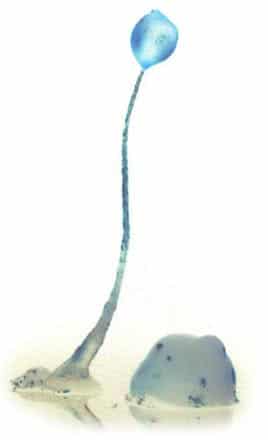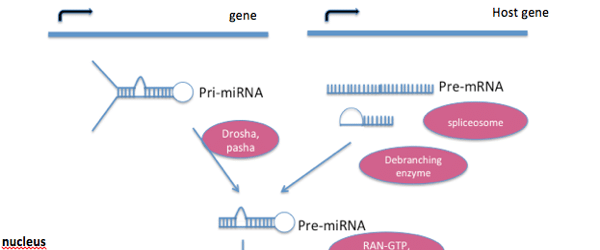Today I would like to introduce you to pUC18, a plasmid most noted for its high copy number.
In the first article in this series, we talked about how origins of replication (ori) control plasmid replication and copy number. To learn about this, we focused on the pBR22 ori and the role of Rop protein in controlling copy number within pBR22 and other members of the ColE1 family.
Now we are going to learn about genetic alterations in plasmids that affect copy number. These mutations were first noted in the high-copy plasmid, pUC18. pUC18 is related to pBR22 and is also a member of the ColE1 family. I know, I know – plasmid names can be really overwhelming so don’t get too caught up with remembering all the details right now!
Where does pUC18 come from?
pUC18 is one of the most widely used cloning and expression vectors within research labs today. The pUC series (containing pUC18, 19) was created at the University of California by Yanisch-Perron et al. as a modification of an existing group of cloning plasmids.
The pUC series is related to pBR22 having a similar origin of replication (i.e. ori from pMB1). Therefore, the pUCs also belong to the ColE1 plasmid family.
pUC vectors are smaller (approx. 2.7 kB) than pBR22, but they exist at much higher copy numbers. Keep reading on to find out why!
To explain how the pUCs exist as high-copy plasmids, let’s take a quick recap of plasmid replication within the ColE1 family. Here comes the science bit!
- RNA II primer stably hybridizes to the DNA template strand. This hybrid is cleaved by RNAseH allowing access by DNA pol I marking the initiation of replication.
- A regulatory RNA, RNA I, is transcribed from the same region as RNA II. RNA II is transcribed from a sense promoter, while RNA I is transcribed from an antisense promoter.
- Interaction between RNA I and RNA II causes a conformational change in RNA II, inhibiting its binding to the template DNA, thereby preventing the initiation of plasmid DNA synthesis.
- Furthermore, the antisense promoter is much stronger than the sense promoter, resulting in a 100-fold excess of inhibitor (RNA I) relative to pre-primer (RNA II). This results in a negative feedback loop, where the levels of inhibitor are proportional to the number of plasmids.
- The Rop protein further regulates the process as it strengthens the RNAI/RNA II duplex.
What is different about plasmid replication in the pUC series?
The high copy number of pUC plasmids is attributed to two features:
- A single point mutation in RNA II
- Absence of the rop gene
Single point mutation in RNA II
Chao et al. showed that pUC contains a G-A point mutation in nucleotide 112 of the RNA II transcript in a segment that lies immediately adjacent to the region complementary to RNA I, enhancing its ability to initiate plasmid replication. It is generally accepted that the pUC mutation hampers interactions between RNA I and RNA II by producing a temperature-dependent alteration of the RNA II conformation.
Surprisingly, engineering this mutation alone into pBR22 did not recreate the high-copy phenotype, unless the Rop protein was also deleted, indicating that this mutation is suppressible by Rop. (Hint: keep reading on for a simplified version of this paragraph!)
The mutation is also temperature-dependent in that its phenotypic effects can be suppressed by lowering the growth temperature to 30°C. The phenotype is further enhanced by growth at 42°C, at which copy number is further increased.
Absence of the rop gene in pUC18
The pUC plasmids are actually ColE1 variants that lack the rop gene. Since the Rop protein is a negative regulator of plasmid replication within the ColE1 family, it is clear that it’s absence will ‘loosen the control’ on plasmid replication leading to increased copy number. The increased copy number observed in pUC can be reverted by expression of the Rop protein. The Rom/Rop protein may either promote normal folding of the mutated RNA II or, alternatively, may facilitate interaction of suboptimally folded RNA II with RNA I.
Either way, the absence of Rop, in conjunction with the RNA II point mutation, plays a critical role in the high copy number of pUC plasmids.
A simplified explanation :)
A point mutation in RNAII reduces its ability to hybridize with RNAI. This prevents the inhibition of plasmid replication that usually occurs upon hybridization. Rop can override the effect of this mutation, so both the mutation and the absence of Rop are needed to see the effects of this mutation.
Now you (hopefully!) know a lot more about pUC18 – but are there other ways in which you can increase the copy number of plasmids? Stay tuned to find out ways you can adjust bacterial growth conditions to affect copy number.
References
- Yanisch-Perron C, Vieira J, Messing J. Improved M13 phage cloning vectors and host strains: nucleotide sequences of the M13mpl8 and pUC19 vectors. (1985) Gene. 33(1):103–119
- Lin-Chao S, Chen W-T, Wong T-T. High copy number of the pUC plasmid results from a Rom/Rop-suppressible point mutation in RNA II. (1992) Mol. Microbiol. 6(22): 3385-3393.






